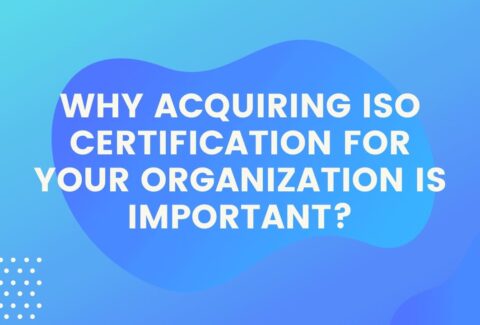Top 4 Powerful Audit Defect Control Strategies
Introduction: Why is it Important to Manage Defects after an Audit?
Top 4 Powerful Audit Defect Control Strategies, A quality audit is one of the most important components of quality management. It help determine the effectiveness of quality management procedures by evaluating systems, processes, and products.
An audit can be conducted internally or externally. An external audit is conducted by an independent party whereas internal audits are conducted by employees within the organization under evaluation.
The primary goal of a quality audit is to identify defects in an organization’s management system and provide recommendations for improvement. This may be accomplished through a variety of techniques that include process mapping, employee interviews, customer surveys, and document reviews.
They are fundamentally different than inspections because they do not evaluate whether or not a product meets specifications; rather they evaluate whether or not specifications are being followed correctly for each product to ensure consistency
The Main Causes Behind Auditing Defects – Which One Needs to be Improved?
The main cause of defects can be categorized as functional requirements, non-functional requirements, and implementation issues.
Functional requirements are the specifications for how a system should work on. Non-functional requirements are specifications about how a system should be used or what it should do in addition to operating correctly, and how to Manage and Improve Defects after an Audit. Implementation issues are problems with the implementation of functional and non-functional requirements which slows down performance or introduces bugs.
Defects are very common in any industry and companies. What might not be so obvious is why they occur in the first place. There are many factors that contribute to this. Some of them are discussed below:
In any industry, defects are a common occurrence, but they’re oftentimes difficult to identify. This article discusses the many causes of these problems.
The most prevalent cause of defects in any industry is human error. Humans are prone to making mistakes and errors when it comes to production. From a manufacturing standpoint, this is often due to workers who aren’t following proper safety procedures or specifications when assembling a product.
The most prevalent cause of defects in any industry is human error. Humans are prone to making mistakes and errors when it comes to production. From a manufacturing standpoint, this is often due to worker fatigue, foggy judgment, and a lack of mental clarity.
What are the Best Ways to Improve Auditing Defects?
Auditing defects is a tedious and time-consuming process. Auditors have to go through one by one to find errors in a document. Reviewing software can help by speeding up the process and finding more defects. It can also check for consistency, find duplicates, and uncover other types of errors with ease.
-Delegate the work to the team members who are experts in that specific type of audit.
-Focus on one defect at a time and fix it.
-Make sure you fix all the errors before moving on to another one.
-If you’re not sure about the solution, call a professional auditor for advice.
1. Conduct a Thorough Review of All Processes and Systems
When it comes to conducting an effective audit, one of the most important things that you can do is to thoroughly review all processes and systems. This will help you to identify any potential areas of weakness or potential improvement. By taking the time to review all aspects of your business, you will be able to ensure that your audit is as comprehensive and effective as possible.
2. Implement Effective Controls
Once you have identified potential areas of improvement, it is important to put in place effective controls. This may involve introducing new policies and procedures or making changes to existing ones. Whatever approach you take, it is important to ensure that your controls are designed to effectively mitigate the risks associated with the identified weaknesses.
3. Conduct Regular Testing
In order to ensure that your controls are effective, it is important to conduct regular testing. This will help you to identify any areas where improvements can be made, and will also allow you to verify that your controls are working as intended. By conducting regular testing, you can be sure that your audit is as effective as possible.
4. Communicate with Management
Another important aspect of conducting an effective audit is to communicate with management. This communication should include a discussion of the findings of the audit, as well as any recommendations for improvement. By communicating with management, you can ensure that they are aware of the audit process and the importance of implementing effective controls.
By following these four powerful audit defect control strategies, you can be sure that your audit is as effective as possible. By taking the time to review all aspects of your business, implementing effective controls, conducting regular testing, and communicating
Conclusion: How to Manage and Improve Defects after an Audit, with Some Easy Steps
Reviewing is a key function that is used in most sectors of business. They are conducted to identify and assess the risk that there may be in an organization and to evaluate whether they will be able to meet their objectives with the resources available and also help in identifying and assessing the risk in the organization.
There are many ways with to improve, with some easy steps. These steps involve using tools like automated checklists, performing self-reviewing, having a team process, etc.
For more, check on our Blog Page.
Looking for More Resources on ISO 9001?
If you found this article helpful, explore our premium resources designed to help you achieve ISO 9001 certification efficiently:
- Complete Documentation Package for ISO/IEC 9001 2015: Get all the essential templates and documents you need for fast, easy implementation.
- Online Course on ISO/IEC 9001 2015 : Enroll in our comprehensive training to master the key concepts and practical steps toward certification.
- ISO/IEC 9001 2015 Checklist: Download our detailed checklist to ensure you’ve covered every step of the process.
These resources are tailored to meet your needs and ensure a smooth certification journey. Explore them today and get one step closer to success!

















